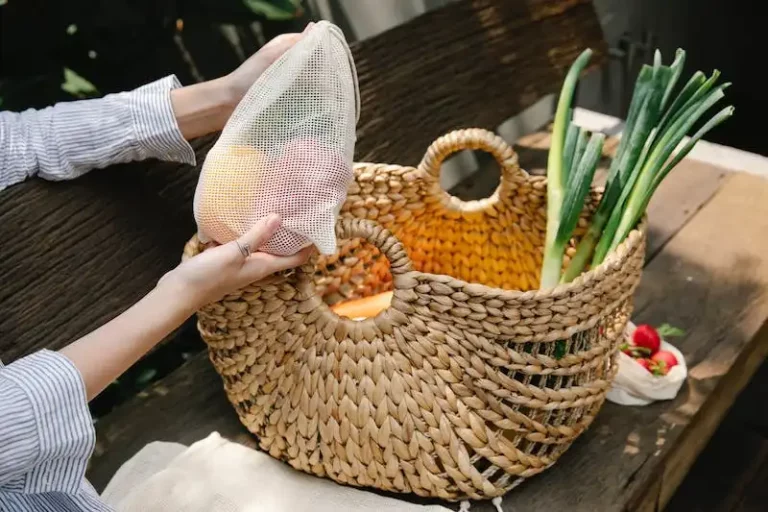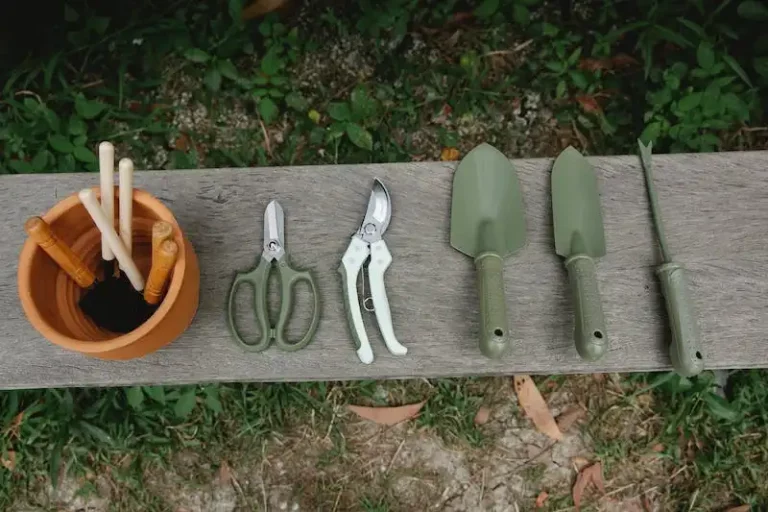Blueberries are delicious and healthy, and growing them in pots is a great option for many gardeners. The most common type of blueberry grown in pots is the highbush blueberry, which is ideal for container gardening due to its compact size and shallow root system. With proper care and attention, you can create an ideal environment for your blueberries to thrive.
When choosing a pot for your blueberries, make sure it is at least 18 inches deep and 24 inches wide, as blueberry roots grow horizontally. Place a layer of shredded sphagnum peat moss at the base of the pot to help with drainage and retain moisture. Then, fill the pot with a simple potting mix that is well-draining but rich in nutrients. You can also mix in some compost or aged manure to provide additional nutrients.
Blueberries require a specific type of soil acidity, so it’s important to test the pH of your soil. The ideal range for blueberries is between 4.5 and 5.5. If your soil is too alkaline, you can add elemental sulfur to lower the pH. If it is too acidic, you can add lime to raise the pH. Regularly test the pH of the soil to ensure it remains within the optimal range.
Blueberries need a sunny spot to grow, so place your pots in a location that receives at least 6 hours of direct sunlight each day. However, in warmer climates, some afternoon shade is beneficial to protect the plants from scorching. Watering is also crucial for blueberries, especially in the hot summer months. Keep the soil moist but not waterlogged, and water regularly to prevent the soil from drying out.
Caring for blueberries in pots also involves regular fertilization. Use a slow-release fertilizer specifically formulated for acid-loving plants, following the package instructions. Additionally, blueberries need proper pollination to produce fruit, so planting different cultivars nearby or manually hand-pollinating can improve fruit set and yield. Pruning is also important to encourage new growth and remove any damaged or diseased branches.
Harvesting blueberries is a rewarding experience, but it requires patience. Blueberries ripen from mid-spring to mid-summer, depending on the variety. Wait until the berries are fully plump and have a deep blue color before harvesting. Gently remove the berries from the plant, leaving the green stem attached. Enjoy your homegrown blueberries in smoothies, pies, or simply as a healthy snack!
Growing blueberries in pots is a simple and rewarding process that any gardener can enjoy. Whether you have a small balcony or a large backyard, blueberries can thrive in containers, providing you with a bountiful harvest of delicious and nutritious berries.
For more information on growing blueberries in pots, visit the University of California Berkeley’s website: https://berkeleyhort.com/gardening-suggestions/the-blueberry-an-american-native-2
Growing Blueberries in Containers
Growing blueberries in containers is a popular choice for many gardeners, especially those who have limited space or want to have more control over the growing conditions. With the right care and attention, blueberries can thrive in pots and produce delicious fruits for years to come. In this article, we will explore how to grow blueberries in containers and provide some useful tips for selecting the right varieties and caring for your plants.
Choosing the Right Container: When selecting a container for growing blueberries, it’s important to consider the size and material. A container with a capacity of at least 3 gallons is recommended, as blueberries have a shallow but wide root system. Opt for a container made of a lightweight material that can retain moisture, such as glazed clay or plastic. Make sure the container has drainage holes to prevent waterlogging.
Selecting the Right Variety: There are different types of blueberries available, including highbush and lowbush varieties. Highbush blueberries, such as ‘Bluecrop’ and ‘Jersey’, are preferred for container gardening as they are compact and produce large fruits. Lowbush blueberries, also known as bilberries, are smaller and more suited for ground planting.
Preparing the Potting Mix: Blueberries require acidic soil with a pH level between 4.5 and 5.5. To create the ideal growing medium, use a soilless mix formulated for acid-loving plants or make your own by combining equal parts of peat moss, shredded pine bark, and perlite. Avoid using regular garden soil, as it may not provide the right acidity and drainage.
Planting the Blueberry: After preparing the potting mix, fill the container with the mixture until it reaches about an inch below the rim. Dig a hole in the center and place the blueberry plant in it, making sure the top of the root ball is level with the surface. Gently backfill the hole with the potting mix, lightly firming it around the plant. Water the blueberry plant thoroughly and place the container in a sunny spot with at least 6 hours of direct sunlight.
Caring for Blueberries: Blueberries require regular watering to maintain moist but not waterlogged soil. Water the plants deeply once or twice a week, especially during dry spells. In the colder months, reduce watering but do not let the soil dry out completely. A layer of mulch, such as shredded bark or pine needles, can help retain moisture and suppress weed growth.
Providing the Right Conditions: Blueberries prefer cool temperatures and do well in climates similar to their native North America. They require a chilling period during winter dormancy, with temperatures below 45°F (7°C), but they are not frost-tolerant and need protection from extremely cold winds. If you live in a region with warm winters, consider planting a dwarf blueberry variety that requires less chilling hours.
Overwintering Potted Blueberries: During winter, potted blueberries can be moved indoors to protect them from freezing temperatures. Find a cool, bright spot in your home, such as an unheated room or a garage with windows, where the temperature stays between 32°F (0°C) and 45°F (7°C). Water the plants sparingly, only when the soil is dry, and limit fertilization until the growing season resumes in spring.
Increase Your Harvest: Blueberries are self-fertile, but planting more than one variety can increase fruit production. Be sure to choose varieties that have overlapping bloom times to ensure proper pollination. To maximize your harvest, avoid overcrowding by spacing your potted blueberries at least 2-3 feet apart.
In conclusion, growing blueberries in containers is a rewarding experience that allows you to enjoy homegrown fruits even if you have limited space. By selecting the right varieties, providing the proper care, and creating the ideal growing conditions, you can successfully grow blueberries in pots for years to come.
Ask Your Gardening Question
If you have any questions about growing blueberries in pots, we’re here to help! Whether you’re a beginner gardener or have years of experience, we understand that caring for blueberry plants can sometimes be challenging. Please feel free to ask us anything related to blueberry cultivation.
Blueberries are native to North America and have been grown for centuries. They are known for their delicious fruit and beautiful foliage. Blueberry plants require acidic soil, typically with a pH between 4.5 and 5.5. To create a blueberry-friendly environment, use a soil mix consisting of 30% peat moss or shredded pine bark, 30% sand or perlite, and 40% high-quality potting soil. Moisture retention is crucial for blueberries, so make sure the soil is thoroughly moistened at all times. Overwatering can lead to root rot, so it’s important to find the right balance.
To ensure the survival of your blueberries during winter, overwintering is necessary in colder regions. In areas with harsh winters, it is advised to protect potted blueberry plants by moving them to a sheltered location, such as a garage or shed. Alternatively, you can wrap the pots with insulating materials or place them in a larger container surrounded by hay or straw. Mulching around the base of the plant will help protect the roots from freezing temperatures. It’s also important to prune your blueberry plants in late winter or early spring to remove any dead or damaged branches.
When it comes to fertilizers, blueberries have specific nutrient requirements. They benefit from regular applications of a balanced, acidic fertilizer. Look for a fertilizer formulated for acid-loving plants or one that contains high levels of iron. Feed your blueberry plants once a month during the growing season, starting in early spring and ending in late summer. Be sure to follow the instructions on the fertilizer packaging for the correct dosage.
There are different types of blueberry plants available, each with its own characteristics. Some blueberry cultivars are self-pollinating, while others require cross-pollination with a different variety for fruit-bearing. It’s important to choose the right cultivars for your specific needs. Consult your local gardening centers or a horticulturist for advice on the best blueberry varieties for your region and climate.
In conclusion, growing blueberries in pots can be a rewarding experience. With the right care and attention, you can enjoy delicious blueberries fresh from your own garden. If you have any specific questions or need further assistance, please do not hesitate to ask. We are here to help you succeed in your blueberry growing journey!
Growing Blueberries In Pots
If you have limited space or want to grow blueberries on your patio or balcony, growing them in pots is a great solution. Not only does it provide spacing flexibility, but it also allows you to control the light, moisture, and nutrients that your blueberry plants receive.
Blueberries are native to North America and can be grown successfully in a pot if you provide them with the right conditions. They require at least six hours of direct sunlight daily, so placing your pots in a sunny spot is ideal. You can also grow blueberries indoors using high-output fluorescent light.
When it comes to choosing a pot, it’s important to select a container that is suitable for blueberries. A five-gallon pot is usually sufficient for one plant, but smaller pots can be used for dwarf varieties. Make sure the pot has drainage holes at the base to prevent waterlogged roots.
The type of blueberry you choose is also important. Highbush varieties are most commonly grown and produce the largest berries, while lowbush varieties are smaller and better suited for colder areas. Some popular highbush varieties include ‘Berkeley’, ‘Bluecrop’, and ‘Jersey.’
Blueberries require acidic soil with a pH between 4.5 and 5.5. You can prepare the potting mix by combining half peat moss and half acid compost. Adding some shredded pine bark to the mix can improve drainage. To increase acidity, you can also add elemental sulfur or use an acidic fertilizer.
Container-grown blueberries need to be watered regularly to keep the soil moist but not waterlogged. Overwatering can lead to root rot, while underwatering can cause stunted growth and poor fruit development. During the growing season, which is usually from March to September, blueberries should be watered every two to three days.
Blueberries also need regular fertilizing to thrive. Use a slow-release organic fertilizer specifically formulated for acid-loving plants. Follow the instructions on the package for dosage and frequency. Be careful not to over-fertilize, as this can lead to excessive leaf growth at the expense of fruit production.
Overwintering blueberries in pots can be a bit trickier than in-ground plants. Move the pots to a sheltered spot, such as a garage or shed, during the winter months. Make sure the pot is insulated by wrapping it with burlap or bubble wrap. Water less frequently during this time, but do not let the soil completely dry out.
Common blueberry pests include birds, aphids, and spider mites. To protect your berries from birds, you can cover the plants with netting. Aphids and spider mites can be controlled with insecticidal soap. Blueberries can sometimes be susceptible to diseases such as powdery mildew and root rot. Keep an eye out for any signs of disease, and treat them promptly to prevent further spread.
Growing blueberries in pots is a simple and rewarding horticulture project that can be done at home. By following the guidelines mentioned above, you can enjoy a bountiful blueberry harvest right from your own patio or balcony. For more information on growing blueberries, you can visit https://berkeleyhort.com/gardening-suggestions/the-blueberry-an-american-native-2/.



